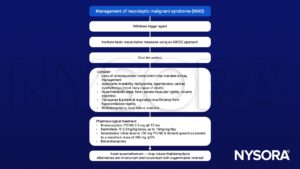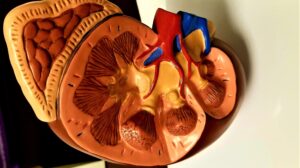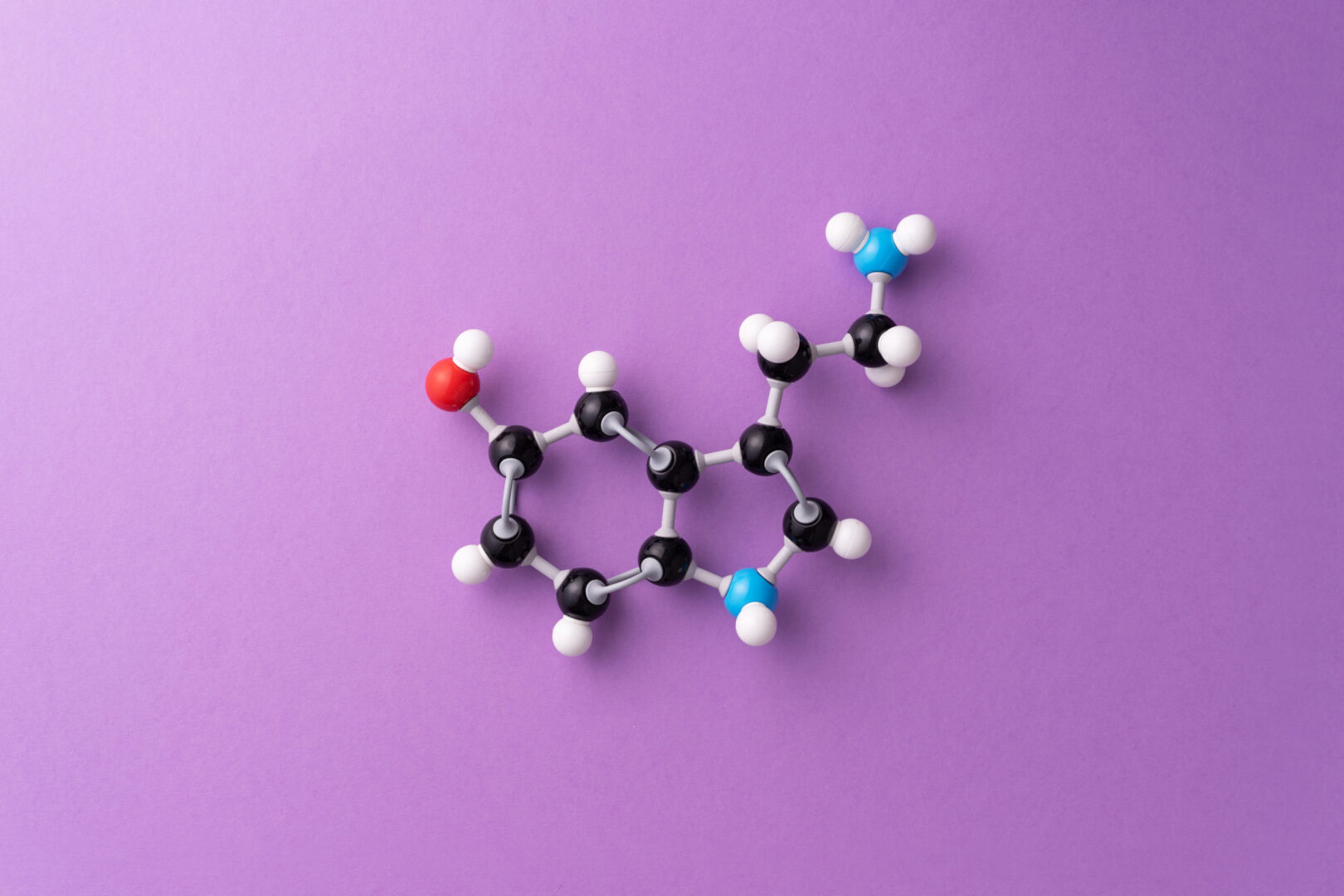Learning objectives
- Recognize Neuroleptic malignant syndrome (NMS)
- Management of NMS
Definition and mechanisms
- Neuroleptic malignant syndrome (NMS) is a rare, potentially fatal neurological condition caused by an adverse reaction to neuroleptic (haloperidol) or antipsychotic agents
- Caused by either treatment with dopamine receptor antagonists or by the withdrawal of dopamine receptor agonists
- This leads to an acute blockade of dopaminergic transmission in the:
- Nigrostriatum – which produces rigidity
- Hypothalamus – which produces hyperthermia
- Corticolimbic system – which produces an altered mental state
- Usually develops within the first 2 weeks of treatment with the agent but can occur at any time
- The mortality risk is 10%
- Clinical manifestations: remember the mnemonic FEVERS:
- Fever
- Encephalopathy
- Vital signs unstable
- Elevated labs
- Rigidity (vs myoclonus in serotonin syndrome)
- Sweating
Signs and symptoms
- Muscle cramps
- Tremors
- Fever
- Sweating
- Unstable blood pressure
- Stupor
- Muscular rigidity
- Autonomic dysfunction
- Confusion
- Agitation
- Delirium
- Tachycardia
Risk factors
- Dehydration
- Agitation
- Catatonia
- Typical neuroleptics: e.g. haloperidol, chlorpromazine
- Atypical neuroleptics: e.g. olanzapine, clozapine, risperidone
- Anti-dopaminergic antiemetics: e.g. droperidol
- Withdrawal of Dopaminergic Agents: levodopa, amantadine
Complications
| Respiratory | Secondary infection Aspiration pneumonia |
| Cardiovascular | Cardiac arrhythmias Pulmonary embolism |
| Musculoskeletal | Peripheral neuropathy Rhabdomyolysis → myoglobunuria |
Criteria for diagnosis
| Major criteria | Minor criteria |
|---|---|
| High fever Muscular rigidity Elevated serum creatine kinase | Tachycardia Raised blood pressure Tachypnea Altered consciousness level Sweating |
Management

Suggested reading
- Bartakke, A., Corredor, C., Van Rensburg, A., 2020. Serotonin syndrome in the perioperative period. BJA Education 20, 10–17.
- Pollard BJ, Kitchen, G. Handbook of Clinical Anaesthesia. Fourth Edition. CRC Press. 2018. 978-1-4987-6289-2.
- Adnet, P., Lestavel, P., Krivosic-Horber, R., 2000. Neuroleptic malignant syndrome. British Journal of Anaesthesia 85, 129–135.
We would love to hear from you. If you should detect any errors, email us customerservice@nysora.com







